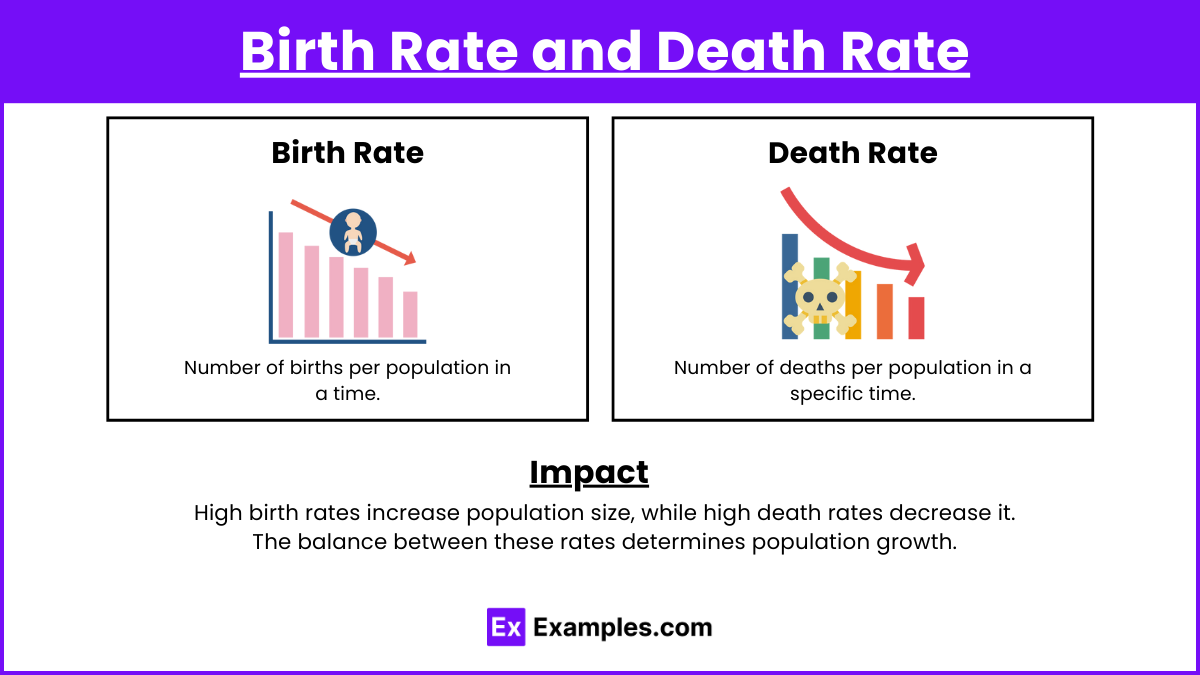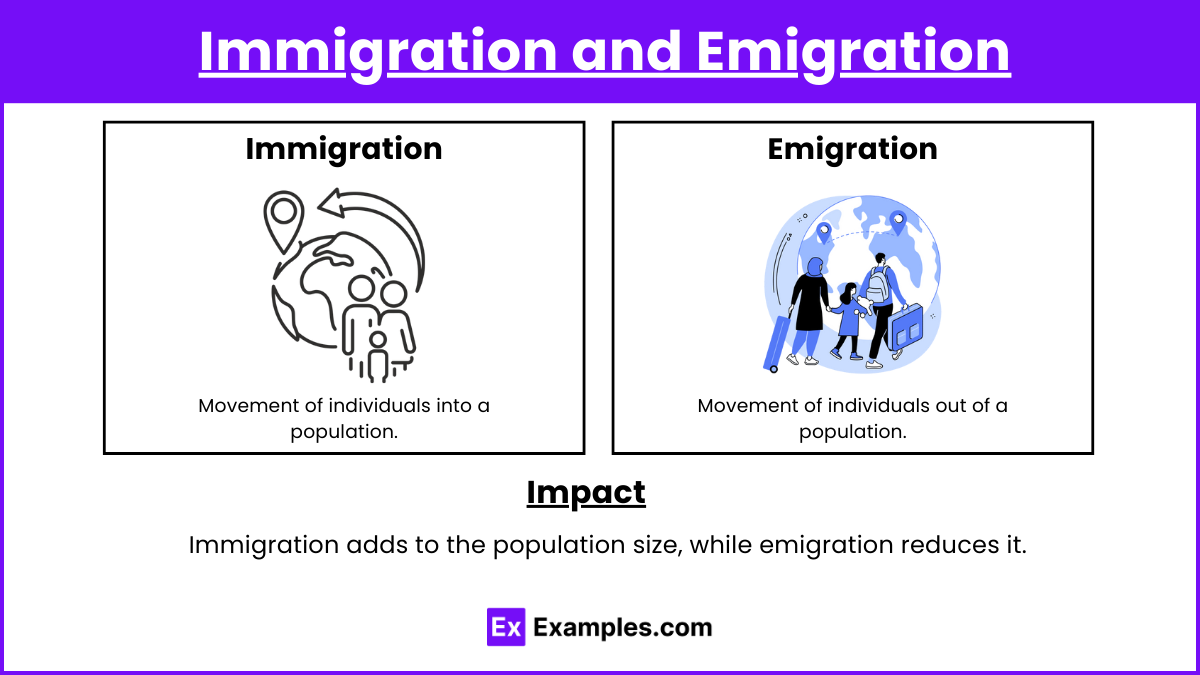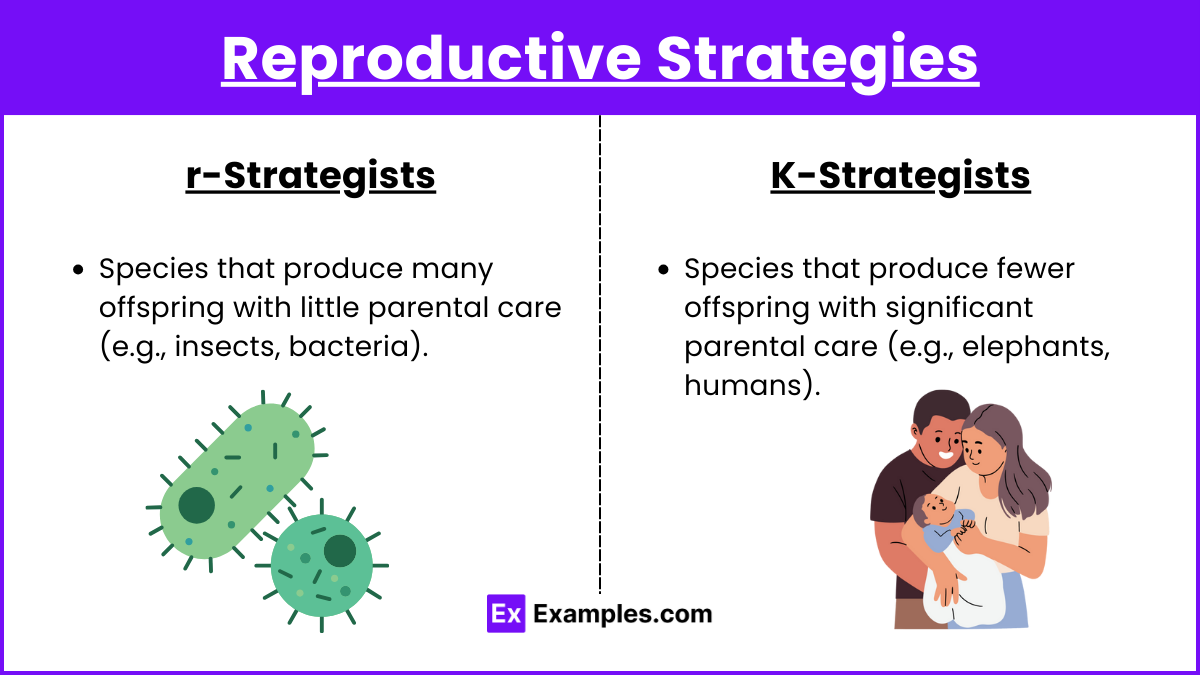In the AP Biology exam, understanding the factors in the growth, density, and success of populations is essential. This topic covers how birth rates, death rates, immigration, and emigration influence population size, and how abiotic and biotic factors affect population dynamics. Key concepts include carrying capacity, density-dependent and density-independent factors, and reproductive strategies. Mastering these concepts helps explain how populations interact with their environment and adapt to changing conditions, providing a foundation for studying ecology and evolutionary biology.
Learning Objective
By studying the factors in the growth, density, and success of populations, you will learn how birth rates, death rates, immigration, and emigration impact population size. You will explore the roles of abiotic and biotic factors, understand carrying capacity, and differentiate between density-dependent and density-independent factors. Additionally, you will examine reproductive strategies (r-strategists and K-strategists) and their ecological implications. This knowledge will help you explain how populations interact with their environment and adapt to changing conditions.
Key Factors Affecting Population Growth, Density, and Success
Birth Rate and Death Rate

Birth Rate: The number of births per unit of time.
Death Rate: The number of deaths per unit of time.
Impact: High birth rates increase population size, while high death rates decrease it. The balance between these rates determines population growth.
Immigration and Emigration

Immigration: Movement of individuals into a population.
Emigration: Movement of individuals out of a population.
Impact: Immigration adds to the population size, while emigration reduces it.
Environmental Factors

Abiotic Factors: Non-living components like temperature, water, sunlight, and soil that affect population growth.
Biotic Factors: Living components such as predators, prey, and competitors that influence population dynamics.
Impact: Favorable abiotic and biotic conditions support population growth; adverse conditions can limit it.
Carrying Capacity (K)
Definition: The maximum population size that an environment can sustainably support.
Impact: Populations tend to stabilize around their carrying capacity due to resource limitations and competition.
Density-Dependent and Density-Independent Factors

Density-Dependent Factors: Factors whose effects on the population vary with population density (e.g., competition, predation, disease).
Density-Independent Factors: Factors that affect the population regardless of its density (e.g., natural disasters, climate).
Reproductive Strategies

r-Strategists: Species that produce many offspring with little parental care (e.g., insects, bacteria).
K-Strategists: Species that produce fewer offspring with significant parental care (e.g., elephants, humans).
Examples
Example 1: Deer Population in a Forest
Description: Deer reproduce rapidly when food is abundant, increasing population size. If the population exceeds the carrying capacity, food becomes scarce, leading to higher death rates and a population decline.
Impact: Demonstrates the effect of carrying capacity and density-dependent factors.
Example 2: Invasive Species - Zebra Mussels
Description: Zebra mussels reproduce quickly and lack natural predators in new environments. They outcompete native species, altering the ecosystem.
Impact: Shows how immigration and lack of biotic regulation affect population success.
Example 3: Human Population Growth
Description: Advances in medicine, agriculture, and technology have increased the human carrying capacity, leading to rapid population growth.
Impact: Highlights the role of technological advancements and density-independent factors.
Example 4: Predator-Prey Dynamics - Lynx and Hare
Description: The lynx and hare populations show cyclical fluctuations, with predator numbers following prey availability.
Impact: Illustrates density-dependent factors and biotic interactions affecting population density.
Example 5: Climate Change Impact on Coral Reefs
Description: Rising sea temperatures and acidification cause coral bleaching and death, reducing coral populations.
Impact: Example of density-independent factors influencing population success.
Multiple Choice Questions
Question 1: Which factor directly limits a population's carrying capacity?
A. Immigration rates
B. Birth rates
C. Availability of resources
D. Emigration rates
Answer: C. Availability of resources
Explanation: Carrying capacity is determined by the availability of resources in the environment, which limits how many individuals the environment can sustainably support.
Question 2: What is a characteristic of r-strategists?
A. Long lifespan and few offspring
B. High parental care and few offspring
C. Rapid reproduction and many offspring
D. Stable population size near carrying capacity
Answer: C. Rapid reproduction and many offspring
Explanation: r-strategists produce many offspring with little parental care, allowing rapid population growth in fluctuating environments.
Question 3: How do density-dependent factors affect population growth?
A. They affect populations regardless of size
B. They cause populations to fluctuate based on density
C. They increase birth rates in all populations
D. They are unrelated to competition and predation
Answer: B. They cause populations to fluctuate based on density
Explanation: Density-dependent factors, such as competition, predation, and disease, have a greater impact as population density increases, causing population size to fluctuate.


